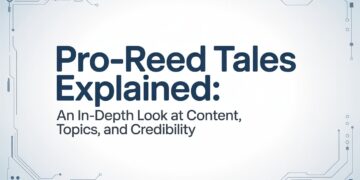Everyone has a tale to tell. Whether it’s about a time when they nailed an interview or a time when they totally botched one, we all have stories that illustrate our points of view. And for software developers, that means stories about the code we write. In this blog post, we’re going to talk about predictive software development—a path that can lead to success. By understanding how predictive software works, you can optimize your code for better performance and avoid common mistakes. So if you’re looking to improve your skills as a developer, read on for tips on how predictive software development can help you get there.
What is Predictive Software Development?
Predictive software development is the practice of using software analytics and machine learning to identify future problems and potential solutions. Predictive models are then used to develop software that is more likely to meet customer needs.
The benefits of predictive software development are twofold. First, it can help reduce the risk of developing faulty software. Second, it can help ensure that future updates and fixes are more timely and effective.
There are a number of different tools available for predictive software engineering. Some common ones include artificial intelligence (AI), text analytics, and machine learning. AI can be used to build models that predict user behavior or customer interests. Text analytics can be used to analyze user feedback or product reviews in order to identify patterns. Machine learning can be used to develop models that improve over time as data is fed into them.
The key thing to remember when using predictive software development is to always use cautionary measures. Never rely on predictions alone – always test them before implementing them in production!
What are the Benefits of Predictive Software Development?
The Predictive software development is an approach to software development that uses simulation and modeling to predict the outcomes of software designs. Predictive models can help developers identify problems before they happen, estimate how long it will take to fix them, and predict the effects of changes to a design.
Predictive models can also help developers improve the quality of their code by predicting when defects will be introduced and estimating how much work will need to be done to fix them. In addition, predictive models can help developers plan for growth in a project by estimating how many new features will be added and how much work they’ll require to implement them.
The benefits of predictive software development are numerous and far-reaching. By using predictive models in the early stages of a project, developers can avoid wasting time fixing mistakes that would have been caught if they’d used more traditional methods such as testing and debugging. Predictive models can also help developers schedule additional time for testing after features are added because they know which areas will require the most attention.
Overall, predictive software development is an effective way to streamline the process of developing software and achieve greater quality results while minimizing errors and wastes of time.
How Predictive Software Development Can Help You Succeed
The field of predictive software development is a growing one, and there are plenty of benefits to reap. Predictive software development helps organizations identify problems early and correct them before they become bigger issues. It can also help developers design software more efficiently, eliminating wasted time and resources. And finally, it can help prevent defects from ever making their way into the final product.
But predictive software development doesn’t come without its challenges. The technology is still in its infancy, and there are many unanswered questions about how best to use it. But with careful planning and execution, predictive software development can enable your organization to achieve success both now and in the future.
Introduction
Whether you’re a software developer, manager, or team lead, predictive software development can be a powerful tool for your organization. Predictive software development is a method of developing software that can anticipate future changes and problems. Predictive software developments can help improve the quality and accuracy of your software, reduce the time it takes to develop new features, and decrease the amount of time you need to maintain your software. If you are interested in learning more about predictive software developments and how it can benefit your organization, read on for some tips on how to get started. ###
Why predictive software development is important
Predictive software development is an important discipline for any software company looking to stay ahead of the curve. Predictive models can help identify and prevent defects before they even happen. This can significantly reduce the time and cost associated with fixing defects, which in turn leads to a higher-quality product that is able to meet customer expectations. Predictive software development also allows companies to better plan their resources, predict future needs, and make informed decisions about product direction.
What types of data should be used for predictive modelling?
There are two main types of data that can be used for predictive modelling: categorical and continuous. Categorical data can be defined as a set of discrete values, whereas continuous data can be viewed as a collection of points with associated measurements.
Categorical data is more suited for predictive modelling because it is easier to define the relationships between variables. For example, in a survey, questions about age could be classified as categorical data. Answers could range from “less than 18 years old” to “more than 65 years old”. This type of data lends itself well to regression models, which use statistical techniques to identify patterns in the data.
Continuous data is less easy to categorize and can be more difficult to model using regression techniques. The measurement points in this type of data might correspond to different levels of performance or customer satisfaction. In order to get accurate predictions, it is important to understand the underlying trends in the data. Statisticians often use algorithms called classification methods or clustering methods in order to group similar measures into clusters or classes.
How to perform predictive modeling
Predictive software development is a process that uses data and algorithms to create models of future behavior. Predictive modeling can be used in a variety of contexts, including product development, advertising, and health care. The goal of predictive modeling is to identify patterns in data and use that information to make predictions about future outcomes.
There are several steps involved in predictive modeling. Data must be collected and analyzed first. This includes input from stakeholders, users, and other sources of information. Models then need to be created based on this data. These models can be used to predict future outcomes, such as customer behavior or product performance. Finally, the predictions made by the models must be evaluated to determine their accuracy.
Predictive modeling is an effective tool for predicting future outcomes. It can help improve the quality of products and services by identifying problems early on in the development process. Predictive modeling also has applications in areas such as advertising and health care prediction.
What are the benefits of using predictive software?
The use of predictive software development can lead to many benefits, both short- and long-term. Predictive software uses statistical models to make predictions about the future, which can help developers create more accurate and efficient code.
Short-term benefits of predictive software’s development include more accurate prediction of product requirements and decreased development time. Long-term benefits include increased product reliability and improved customer satisfaction. Predictive software can also help identify problems early in the developments process, saving time and money.
Conclusion
Predictive software development is a growing field with great potential for success. With the right approach, predictive software can help organizations make better decisions faster and improve processes across a wide range of industries. If you are interested in learning more about predictive software developments, I encourage you to read this article and explore some of the resources available on PredictiveIO.com. Good luck on your journey to becoming a predictive software developer!
Also Read: Pacman 30th Anniversary Invades The World Of Pop Culture



















